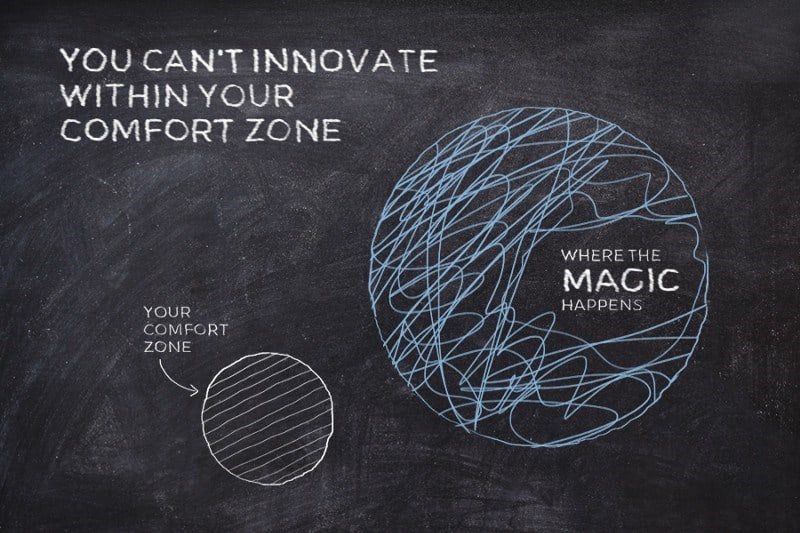Table of Contents
You might have heard of the (in)famous Dunbar’s number, about the limit of the number of stable relationships we can maintain.
What does Dunbar’s number refer to, a.k.a. what is the 150 people rule?
Understanding Dunbar’s Number
There is a common and widely-accepted theory that maintains that human beings have a restricted cognitive ability, one that enables them to keep tabs on and maintain stable relationships with about 150 individuals. This substantial figure, often referred to as Dunbar’s Number, derives its origin from the extrapolation of a regression line that delineates the relationship between the relative neocortex size and the size of the social group in primates.
The Theory’s Academic and Cultural Impact
The belief that the human cognitive capacity is limited to approximately 150 people is deeply rooted in popular culture and academic circles. This theory, known as ‘Dunbar’s number,’ was proposed by British anthropologist Robin Dunbar. His theory posits that the cognitive constraints that dictate human social interactions are the result of our evolutionary history.
Primate Behavior and Cognitive Constraints
This idea is derived from an understanding of the social structures and behaviors of primates, our closest evolutionary relatives. Robin Dunbar arrived at the number 150 by extrapolating a regression line, which is used to predict changes in a dependent variable when independent variables are altered. In this case, the regression line was used to map out the relationship between the relative neocortex size – the part of the brain responsible for higher-order brain functions such as sensory perception, cognition, spatial reasoning, and language – and the size of the social group in primates.
Dunbar’s Observation and Its Broader Implications
Dunbar’s theory is grounded in the observation that, as primates, we share many social behaviors with other members of the primate family, including grooming, socialization, and the formation of social hierarchies. The size of these social networks, according to Dunbar, is directly proportional to the relative size of the neocortex. This correlation suggests that the size of our brains may directly influence the size of our social circles.
Dunbar’s Number in Various Human Societies
Interestingly, the number 150 has also been observed in various aspects of human society, such as the size of hunter-gatherer societies, the average number of soldiers in a military company, and the number of people an individual can recognize. This consistency across different domains indicates that Dunbar’s number may indeed be a fundamental limit to the number of relationships that we can maintain effectively.
Conclusion: Significance in Our Connected World
By investigating the relationship between cognitive capacity and social relationships, Dunbar’s number provides a novel perspective on our understanding of human social behavior and sheds light on the cognitive limitations that underpin our social relationships. As we navigate our increasingly connected world, this understanding becomes ever more critical.
This number was first proposed in the 1990s by British anthropologist Robin Dunbar.
Why Is It Important? What is the meaning of the Dunbar number?
Dunbar’s number is fascinating and significant for several reasons, affecting us in various aspects of our social lives and organizational structures:
- Understanding Human Evolution and Societies: Dunbar’s number offers insights into the social interactions of our ancestors. The theory suggests that early human groups likely consisted of about 150 individuals, providing a framework for understanding how ancient societies were structured and how our brains have evolved to accommodate social activities.
- Social Network Limitations: In the age of social media, people can have thousands of “friends” or followers. However, Dunbar’s number suggests that it’s nearly impossible to maintain truly meaningful relationships with all of them. This understanding can help individuals manage their expectations about their social connections and focus on fostering deeper relationships with fewer people.
- Organizational Design and Management: In business and organizational settings, Dunbar’s number can guide the creation of more efficient work groups and communication structures. Companies might organize departments and teams keeping this number in mind to promote better rapport, communication, and loyalty among employees. When organizations grow beyond this number, they often develop more formal rules and regulations to maintain order, which may not be necessary in smaller companies.
- Community Building: Communities, both online and offline, thrive on engagement and relationships. Understanding that there’s a cognitive limit to the number of stable relationships one can maintain, community builders can focus on keeping groups below this threshold to encourage organic interactions, camaraderie, and a shared sense of purpose.
- Psychological Well-being: Recognizing our limitations in maintaining social connections can also have implications for our mental health. People might feel pressure or anxiety about not being able to connect deeply with a vast network of contacts. Understanding Dunbar’s number can provide a sense of relief, allowing individuals to focus on nurturing a smaller circle of meaningful relationships.
- Marketing and Consumer Relationships: For businesses trying to foster a community feeling among consumers or users, Dunbar’s number might inform strategies to create smaller, more engaged user groups that can offer more personal interactions, rather than larger, less connected audiences.
In all these ways, Dunbar’s number helps us understand the scope and scale of human social interaction, reminding us that while our social circles can be vast, our close, meaningful connections are naturally limited. This insight is valuable in various fields, from anthropology and psychology to business and community development.
The Role of Dunbar’s Number in Engineering Management
When you’re part of a small team, it’s easy to know little details about each other, like what kind of sandwich they like or what they do on the weekend. But as the team gets bigger, you might only remember people’s first names or just know what group they work in. And if you’re in a really large company, you might not even recognize the faces of the people who work in your own department!
Even though a lot of people talk about the limit of 150 people, problems can start even when there are fewer people in a group. If you have a team of ten or less, they’re usually great at working together. But once the team gets bigger than 35 people, you need to start using systems and plans to make sure everyone’s working towards the same goals and on the same schedule.
When there are 150 or more people, the group needs to work independently. At this point, you don’t know everyone’s name or job, it’s hard to keep track of all the different things the group is doing, and it’s tough to figure out the best times and ways to talk to each other.
You need to consider this when you aim to build high-performing teams.
Is Dunbar’s number true or is it debunked? Can we really maintain only 150 relationships?
A team of researchers recalculated Dunbar’s number using his original methods and higher volume and quality data. Their estimates went as high as 520 and were stretched over a wide enough range as to be nearly useless. The authors suggest that the original method used to calculate the number of friends a person can have is also theoretically flawed.
Upon applying Dunbar’s 1992 methodology to their recent data, the authors obtained an average group size of 69 persons, with a 95% confidence interval spanning an impractical range of approximately 5 to 292.
Moreover, the authors critically analyze the tenuous premise of Dunbar’s number, highlighting the distinct cognitive capabilities of humans compared to our closest evolutionary relatives. This distinction is clearly demonstrated in our unique capacity to conceive complex entities such as Stockholm, symphonies, and science. Asserting that our processing of social information mirrors that of other apes is a daring, yet largely unsupported, assertion.
The authors cite a study by Jan De Ruiter, rejecting the notion that the relationship between monkey neocortex size and group structure can be extrapolated to humans.
“Dunbar’s assumption that the evolution of human brain physiology corresponds with a limit in our capacity to maintain relationships ignores the cultural mechanisms, practices, and social structures that humans develop to counter potential deficiencies”
Jan De Ruiter
The point of this study isn’t to replace Dunbar’s number, but to dismiss the notion that such a number can be determined in the first place. The authors go so far as to end their paper with:
It is our hope, though perhaps futile, that this study will put an end to the use of ‘Dunbar’s number’ within science and in popular media. ‘Dunbar’s number’ is a concept with limited theoretical foundation, lacking empirical support.
However, this number has always been the subject of criticism. An alternative value based on empirical studies of American social groups is a much higher 291, nearly double Dunbar’s original. These studies also suggest that the median social network has 231 persons in it. That value wasn’t figured by crunching other numbers, but it kept coming up repeatedly when the authors of that study looked at the professional and social networks cultivated by different groups of people.
Dunbar’s other numbers
While the magic number above made it into popular media, Dunbar has other numbers, too:
- 1500: The number of people we can name and recognize
- 500: The number of not-so-close acquaintances we can keep
- 150: Our stable relationships (this is one above)
- 50: People we call friends or would invite to a group dinner
- 15: The close friends we trust
- 5: Our best friends and closest support group
Probably also wildly inaccurate, but the order of magnitude and the ratio of decrease is quite interesting. Well, I wish I could name 1500 people…




